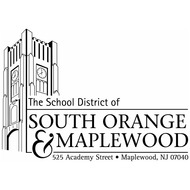Social Sciences: Geography and Mapping Traditional Lands
(View Complete Item Description)Native American people have lived in the area “now known as Oregon since time immemorial (long predating European contact and beyond human memory). During the era of colonialism— and even into the 21st century—non-Native people often portrayed the North American continent as a vast wilderness that was virtually unpopulated when they arrived. This could not be farther from the truth. In Oregon alone there were dozens of tribes, each with its own ancestral territory and rich cultural history. There was not a single region of Oregon that did not have an Indigenous tribe or band living within it. Despite disease, genocide, forced assimilation, and cultural suppression, many of these tribes managed to survive, and they continue to carry their cultural traditions forward as sovereign tribal nations. To survive, however, required giving up vast areas of their ancestral territory, sometimes by way of treaties and sometimes as a result of force. The two activities in this lesson will give students an essential understanding of the rich diversity of Native American tribes that existed in Oregon prior to European settlement, the current territory of the nine federally recognized tribes in Oregon, and the inseparable bond between Native people and the land.
Material Type: Lesson, Lesson Plan




















